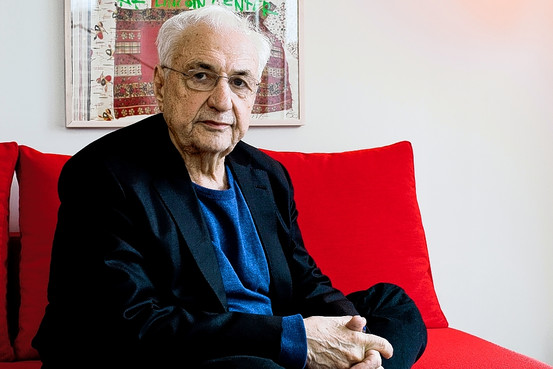
The Wall Street Journal ran an interesting interview with Frank Gehry over the weekend. The architect just opened New York by Gehry at 8 Spruce St., a 76-story tower that is the largest apartment building in the Western Hemisphere and Mr. Gehry’s first major residential project in New York City. His greatest artistic influence? Here’s what he had to say:
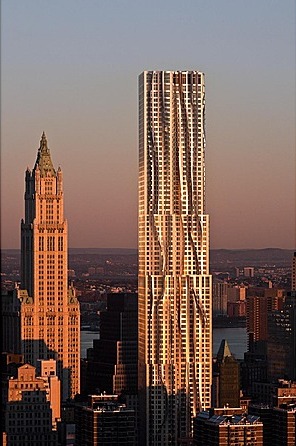 “One of my greatest influences is the Italian artist Gian Lorenzo Bernini. The first time I saw his sculpture of Saint Teresa [in Santa Maria della Vittoria in Rome] was in 1960. You can only see it during Mass and in order to see the little chapel it’s in, you have to get to the front pew and lean forward. I don’t know how to do the crossing myself very well. The young priest was howling with laughter when he saw me in the front row, trying to kneel when everyone else kneels, but doing it wrong.
“One of my greatest influences is the Italian artist Gian Lorenzo Bernini. The first time I saw his sculpture of Saint Teresa [in Santa Maria della Vittoria in Rome] was in 1960. You can only see it during Mass and in order to see the little chapel it’s in, you have to get to the front pew and lean forward. I don’t know how to do the crossing myself very well. The young priest was howling with laughter when he saw me in the front row, trying to kneel when everyone else kneels, but doing it wrong.
“I’ve always been fascinated with folds. All artists through the ages have spent time on the fold. Michelangelo had stacks of drawings of fabric. At 8 Spruce, we’re using Bernini’s folds to inspire the façade. I look for ways to express feeling in a building without using historic decoration.”
Saint Theresa was a nun who was canonized because of the spiritual visions she experienced. She lived during the middle of the 16th century in Spain — at the height of the Reformation. This is her description of the event that Bernini depicts:
Beside me, on the left, appeared an angel in bodily form…. He was not tall but short, and very beautiful; and his face was so aflame that he appeared to be one of the highest rank of angels, who seem to be all on fire…. In his hands I saw a great golden spear, and at the iron tip there appeared to be a point of fire. This he plunged into my heart several times so that it penetrated to my entrails. When he pulled it out I felt that he took them with it, and left me utterly consumed by the great love of God. The pain was so severe that it made me utter several moans. The sweetness caused by this intense pain is so extreme that one cannot possibly wish it to cease, nor is one’s soul content with anything but God. This is not a physical but a spiritual pain, though the body has some share in it—even a considerable share.
tall but short, and very beautiful; and his face was so aflame that he appeared to be one of the highest rank of angels, who seem to be all on fire…. In his hands I saw a great golden spear, and at the iron tip there appeared to be a point of fire. This he plunged into my heart several times so that it penetrated to my entrails. When he pulled it out I felt that he took them with it, and left me utterly consumed by the great love of God. The pain was so severe that it made me utter several moans. The sweetness caused by this intense pain is so extreme that one cannot possibly wish it to cease, nor is one’s soul content with anything but God. This is not a physical but a spiritual pain, though the body has some share in it—even a considerable share.
The New York Observer notes:
The tower’s most defining characteristic is its skin, which has undulating streaks that ride up the building, like small aluminum waves.
Mr. Gehry said that in a skyscraper project of this size he was constrained by the need to make the apartments conform to a general set of what is needed: walls without sharp edges, predictable layout, etc.
“There’s very little room to mess with it inside. The marketplace dictates, pretty much, how apartments are laid out, for better or for worse,” he said.
This led to the waves.
“There is a need to follow that, and the only thing I could play with was the idea of having bay windows, so if you put a bay window in every living room, they would line up; you’d have a stripe.
“And I wanted to loosen that up. So I found out that if I moved the bay window at each floor, I could get these softer, drawn images. So most of those bumps are actually nothing more than a conventional bay window,” he said, pointing to the waves.
That undulation is, he said, inspired by Bernini folds, the folds on the clothing of marble sculptures carved in the 17th century.
Related:
- Bernini: “The Ecstasy of Saint Teresa”
- Bernini: “Fontana della Barcaccia”
- Bernini: “Bust of Medusa”
- Bernini: “Four Rivers”
- Michelangelo: “Pietà”
- da Vinci: “Drapery Study for a Seated Figure”
Further Reading:
- Sitting Down with Frank Gehry, The Wall Street Journal
- Gehry Gets Topped Out in Lower Manhattan, The New York Observer
- Gehry’s Beekman Tower to Hit the Market in Early 2011, nyc-architecture.com
- 8 Spruce St | New York by Frank Gehry, New York City Feelings
- New York by Gehry Official Website
- The Coincidental Dandy, Floating Marble: The Ecstasy of Saint Teresa
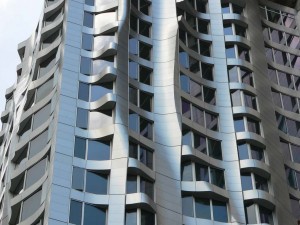
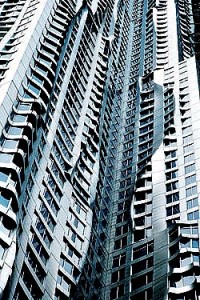
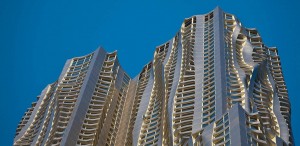
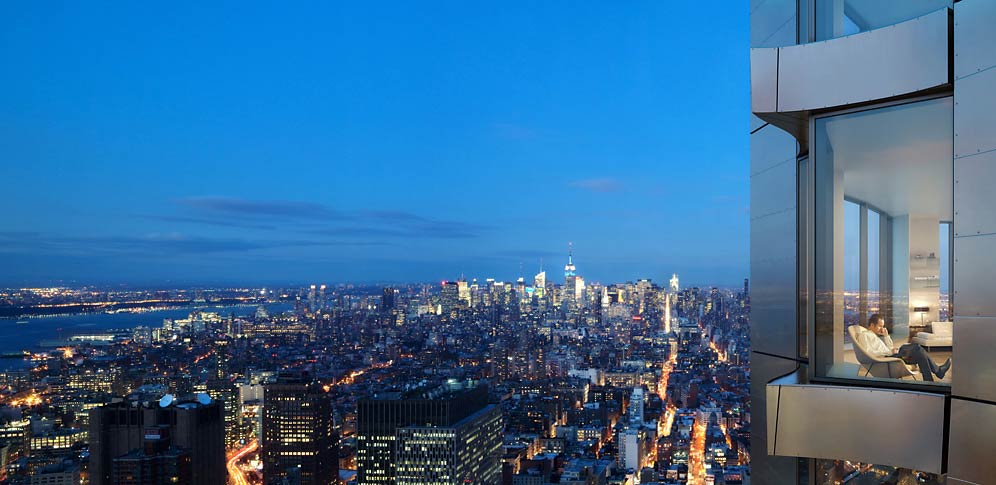

Dear Bellavitae:
I greatly enjoyed reading your article on Mr. Gehry. Looking at the images of his building on 8 Spruce Street, it becomes clear that, as he said, he was inspired by the folds of Bernini’s Saint Teresa’s garments: “I’ve always been fascinated with folds. All artists through the ages have spent time on the fold.” One would not, at first sight, have expected it but, after reading his interview, it becomes apparent as if by revelation. Nothing in design is new – it has all been done, to some extent, before. What I find interesting is the use of old themes, transformed into novel (and modern) innovations.
Incidentally, the Toronto-born Mr. Gehry was also responsible, a few years ago, for the updating of the Art Gallery of Ontario (AGO); he generously employed ‘folds’ there, too: http://www.ago.net/frank-gehry-redesigned-ago
Best regards,
₵. Ð.